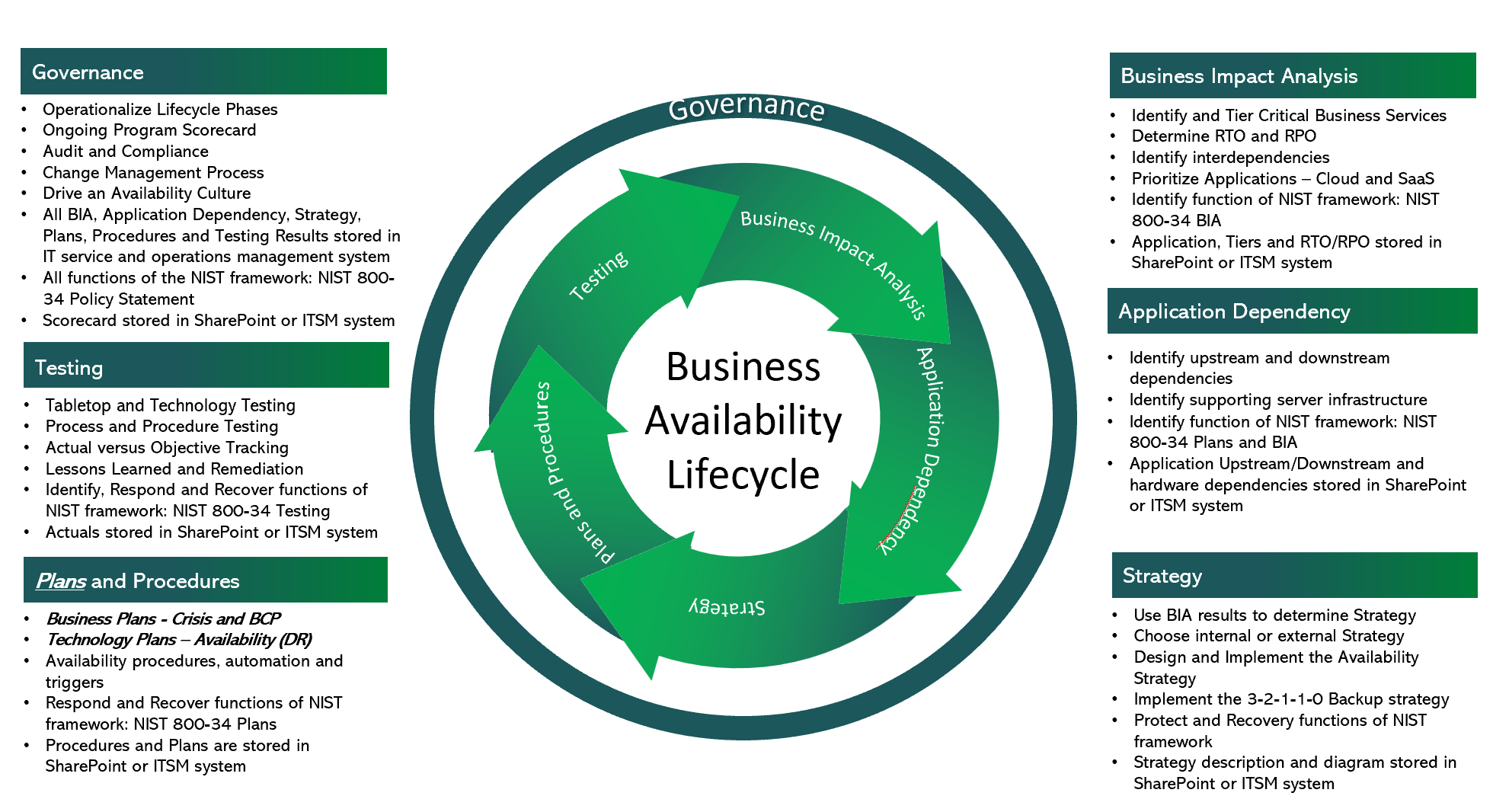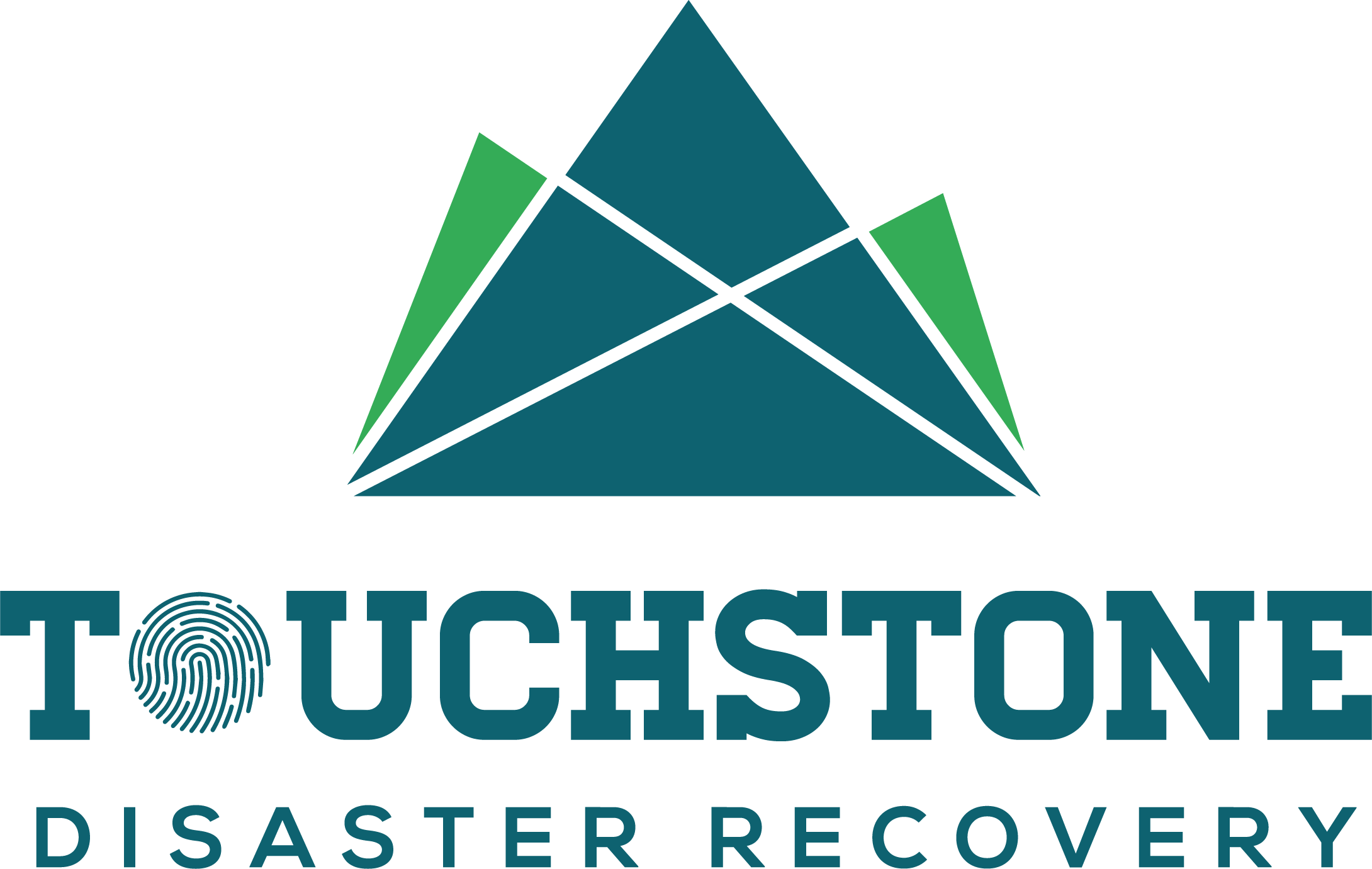Let Us Help You Improve Your Recoverability
Make the Shift From Recovery to Availability
“Disaster Recovery” is quickly becoming an antiquated term as organizations move to an “always available” Information Technology environment. The metrics that have driven Information Technology for the last 40 years, are no longer valid for measuring 24×7 business process availability.
Touchstone helps organizations identify business processes and applications that need to be highly available and builds programs that leverage Availability metrics, rather than Disaster Recovery metrics.
(CLICK HERE to read more about Disaster Recovery vs. Availability.)

At Touchstone, we are passionate about the processes, teams ,and policies to guide each phase of the Business Continuity/Availability Program Lifecycle.
Touchstone’s services are critical for maintaining company governance (the common directions, policies and rules that an organization uses to deliver and maintain IT Services).
We work hard as an Availability (DR) service provider to meet your company’s availability needs, in addition to providing in-depth training for businesses that are wanting to perfect their own availability provider (DR) programs.
Learn More About Our Specialized Service Offerings:
Business Impact Analysis
The impact of your critical applications being unavailable is widespread, and for most companies, potential downtime is uncalculated and unknown.
Business Impact Analysis (BIA) enables you to predict Availability Time Objective (the maximum amount of time you can afford for your applications to be unavailable) and Availability Point Objective (maximum data loss).
Operational, regulatory, and financial impacts of downtime (per hour/minute) are also determined. Business process, supporting applications, are typically tiered into levels of criticality during the BIA process.
The benefit of BIA = impact of downtime determined including its effects on customer service, operations, regulatory/legal, and financial. Financials are often used to offset technology investments.
Application Dependency Mapping
The majority of businesses and organizations do not have a good understanding of application dependency, resulting in an inability to efficiently mobilize their workload and access their critical applications on demand.
Our Application Dependency Mapping services (ADM) solve the issue of being able to move workload around as needed, increasing application availability and mitigating disaster before it happens. The benefits of ADM include the provision of application dependency, supporting infrastructure and a baseline asset repository – system of record.
Availability Strategy
Availability Strategy is the first step to ensuring availability of critical business processes and respective applications.
Availability Strategy is based on ATO/APO input from the BIA (Business Impact Analysis), and inherent technology capabilities (often the technology provides a specific ATO/APO, e.g. Zerto provides a 10-minute ATO).
To meet the required ATO/APO, an Availability Strategy is determined. Unique to our process is ensuring SaaS and Cloud Providers’ ATO/APO and SLA’s match business requirements.
Availability Procedures
Availability Procedures provide a step-by-step guide for restoring business applications and infastructures, and place the focus on automation and orchestration.
Availability procedures should be part of daily operational procedures for every organization.
Triggers are added to assist with determining when an incident becomes a larger scale event. Procedures and runbooks are prepared or updated. Availability (e.g. failover, move of an application) are added. Ultimately, runbooks should be automated.
Availability & Incident Plans
Availability is the process the Information Technology team follows to restore critical applications and infrastructure in the event of a disruption. This is the compendium of procedures to failover or restore applications, systems and network.
Incident Response (response to a day-day technology incident) is the process the Information Technology team follows to restore a critical application and/or related infrastructure (server, network, etc.).
Availability and incident plans benefit organizations by providing a step-by-step guide to restoring applications and infastructure.
Business Continuity & Availability Test Program
The Business Continuity and Availability Test Program has the ability to measure and compare the Availability Time Achieved (ATA) against the important ATO. This program is critical because it includes technology testing, procedure walkthrough, and tabletop testing which increase application availability and focuses on prevention of disaster.
